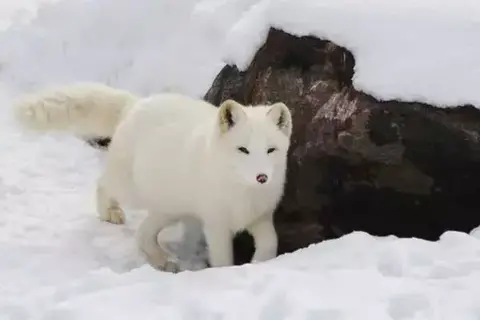10 Interesting Facts About The European Lynx
Noah YoungThe ancient Greeks believed that the lynx could see through objects. Today we will tell you interesting facts about the European lynx. June 11th is the Day of the Lynx in Europe. Eurasian Lynx is the largest cat predator in Europe and, accordingly, in Ukraine. It still plays an important role in the ecosystems of remote forests of the Carpathian Mountains and Polesie. Until the 19th century, the Eurasian Lynx was found in most of our continent, including the plains. But deforestation, forest conversion, and unabated hunting of the lynx led to a critical decline in some countries and the complete extinction of the species in others. In Hungary, for example, no lynx was registered between 1915 and 1983, so it was listed as an extinct species. Today the population of European lynx in Hungary is estimated at 10-12 animals, in the northern mountain ranges of the country close to Slovakia. Lynx is a fast and effective predator that prevents the excessive spread of herbivores (roe deer, chamois, moufflons). Its extremities are equally suitable for both sprinting and jumping. The lynx’s wide paws allow it to move easily in the snow, and the characteristic “tassels” on its ears enhance its hearing.
Interesting facts about the European lynx
 Photo by Александр Лич on pexels
Photo by Александр Лич on pexels1.The lynx lynx (from Greek λύγξ – “light”, “shine”) got its Latin name because of its sharp vision. The ancient Greeks believed that the lynx could see through objects. The Polish astronomer Jan Hevelius named the constellation after the lynx in 1690. He explained the choice of the name: “In this part of the sky there are only small stars, and you have to have lynx eyes to distinguish and recognize them”.
2.Lynx is the northernmost cat: in Scandinavia, it is found even beyond the Arctic Circle. Lynx is well adapted to the harsh frost and snow: its paws don’t fall into the snow due to its long and dense fur.
3.Lynx in the Carpathians usually lives in deaf and remote forests. It rests on rocks and stones beyond human reach. In winter they can go down for hunting lower, where there is less snow.
4.There are many options for coloration of the lynx, depending on the geographical area: from reddish-brown to pale-smoke, with more or less pronounced spotting on the back, sides, and paws.
5.Lynxes can jump 4 m in length, but they never jump from trees for prey: they hunt from ambushes.
6.Thanks to the tassels on his ears lynx have an incredible hearing, it can hear the footsteps of a man for a few kilometers, so catching a lynx is very difficult.
7.Lynx never attacks people or other large predators, such as bears or wolves. Lynx hides the remains of its food under rocks, leaves, or branches. It hunts hares, birds, chamois, boars, and sometimes stray dogs and cats, but never cattle, unlike other predators.
8.Lynxes live alone. However, the individual section of the male includes sections of two or even three females. A pair is most often found during the mating period. But even during the year they willingly communicate at meetings, during which the lynx sniff each other and woke their foreheads.
9.Lynx can live in captivity for up to 25 years, and in the wild up to 17 years.
10.The image of a lynx is widely used in heraldry – on coats of arms of cities and countries. In 2001, the National Bank of Ukraine issued a commemorative “lynx” coin worth 2 hryvnias. The reverse of the coin shows a lynx with a calf, which sits on a branch, and circular inscriptions: at the top – “common lynx”, at the bottom – “LYNX LYNX”. The artist is Vladimir Demyanenko.
Did you like interesting facts about European lynx? Share it with your friends.
See also Interesting facts about the Canadian lynx
- WildlifeWhat Monkey Has A Red Bottom? Monkeys With Red Bottom

- DogsWhat You Should Know About Your Dog’S FoodBy Murphy Scott

- Wildlife20 Interesting Facts About SnakesBy Evelyn Star

- DogsHow To Choose Dog Shoes For Walking?By Khai Dove

- Insects20 Interesting Facts About ButterfliesBy Lucas Torres

- WildlifeAre Chameleons Good Pets?By Charlotte Green

- Dogs10 Interesting Facts About PoodlesBy Khai Dove

- WildlifeWhat Do Tapirs Eat?By Murphy Scott

- WildlifeTop 10 Most Dangerous Animals In The WorldBy Amelia B

- Wildlife7 Interesting Facts About Arctic FoxesBy Camilo Walker
